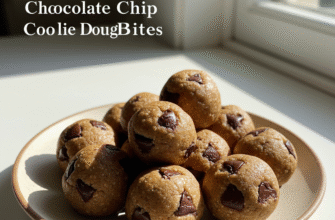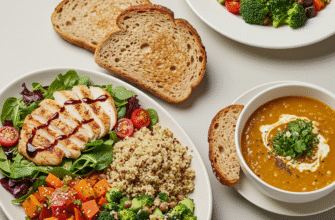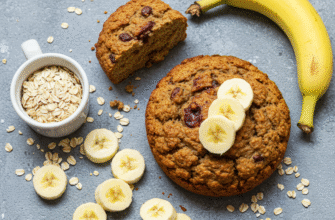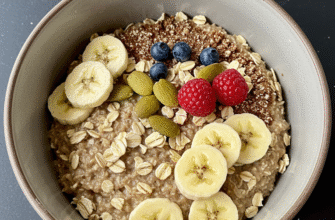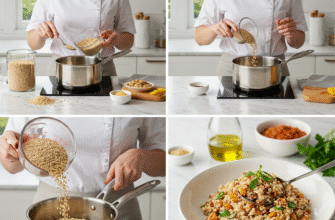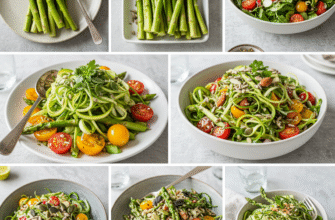Clams often bring to mind images of seaside holidays and steaming bowls brimming with flavour. These little bivalves are more than just a tasty treat; they are wonderfully versatile and pack a surprising nutritional punch, making them a fantastic addition to a healthy eating plan. Forget heavy, cream-laden sauces or deep-fried preparations; clams shine brightest when cooked simply, allowing their natural briny sweetness to come through while keeping things light and beneficial for your well-being.
So, what makes clams a healthy choice? They are an excellent source of lean protein, crucial for muscle building and repair, and keeping you feeling full and satisfied. Unlike many other protein sources, they are exceptionally low in fat, particularly saturated fat. What they do offer in the fat department includes beneficial omega-3 fatty acids, known for their heart-health benefits. Furthermore, clams are mineral powerhouses, loaded with iron (vital for preventing anaemia), selenium (a potent antioxidant), manganese, phosphorus, and zinc. They are also one of the best natural sources of vitamin B12, essential for nerve function and red blood cell formation.
Selecting and Preparing Clams for Healthy Cooking
The key to delicious and safe clam dishes starts with selecting fresh, high-quality clams. When buying clams, look for shells that are tightly closed. If a clam’s shell is slightly open, give it a gentle tap; a live clam should snap shut. Discard any clams with cracked, chipped, or wide-open shells that don’t close when tapped – these are likely dead and unsafe to eat. Fresh clams should smell like the ocean – clean and briny. Avoid any that have a strong fishy or ammonia-like odour.
Once you get your clams home, proper preparation is crucial, mainly to remove any sand or grit they might contain. Nobody enjoys a sandy bite! The process is called purging:
- Rinse the clams under cold running water, scrubbing off any mud or debris from the shells with a stiff brush.
- Place the cleaned clams in a large bowl or pot.
- Cover them with cold, salted water. A common ratio is about 1/3 cup of salt per gallon of water, mimicking seawater. Some cooks add a tablespoon of cornmeal, believing it encourages the clams to expel more sand, though this is debated.
- Let the clams soak in the refrigerator for at least 30 minutes, or up to an hour. You might see them siphon water and spit out sand.
- Carefully lift the clams out of the water, leaving the sandy sediment behind at the bottom of the bowl. Do not pour the clams and water through a colander, as this will just pour the grit back over them.
- Give them one final quick rinse under cold water before cooking.
Important Safety Check: Always inspect your clams before cooking and after purging. Ensure shells are intact and closed (or close when tapped). After cooking, discard any clams that haven’t opened. An unopened clam after cooking was likely dead beforehand and is not safe to consume.
Healthy Cooking Methods for Clams
To keep your clam dishes light and healthy, focus on cooking methods that don’t require excessive amounts of fat or heavy ingredients. Steaming is perhaps the most popular and healthiest way to cook clams. It uses moist heat to gently cook the clams until they open, preserving their delicate flavour and nutrients. Grilling imparts a wonderful smoky flavour, especially great for larger clam varieties. Baking or roasting, perhaps with herbs and lemon, is another excellent low-fat option. Light stir-frying with plenty of vegetables also works well, cooking the clams quickly over high heat.
Delicious and Healthy Clam Recipes
Steamed Clams with Garlic, White Wine, and Herbs
This classic preparation is simple, elegant, and lets the clams be the star. It’s naturally low in fat and calories.
Ingredients:
- 2 lbs fresh clams (like littlenecks or Manila), scrubbed and purged
- 1 tbsp olive oil
- 4-5 cloves garlic, thinly sliced
- 1 shallot, finely chopped (optional)
- 1/2 cup dry white wine (like Sauvignon Blanc or Pinot Grigio)
- 1/2 cup low-sodium vegetable or chicken broth (or water)
- Pinch of red pepper flakes (optional)
- 1/4 cup chopped fresh parsley
- 1 tbsp chopped fresh thyme or oregano (optional)
- Lemon wedges, for serving
- Whole grain crusty bread, for dipping (optional, use sparingly)
Instructions:
- Heat the olive oil in a large pot or Dutch oven with a tight-fitting lid over medium heat.
- Add the sliced garlic and shallot (if using) and sauté for 1-2 minutes until fragrant, being careful not to burn the garlic. Add red pepper flakes if desired.
- Pour in the white wine and broth. Bring the liquid to a simmer and let it cook for 2-3 minutes to allow the alcohol to evaporate slightly.
- Carefully add the cleaned clams to the pot.
- Cover the pot tightly and let the clams steam for 5-10 minutes. The cooking time will vary depending on the size and type of clams. Start checking after 5 minutes. The clams are done when their shells have opened wide.
- Once most clams have opened, remove the pot from the heat. Discard any clams that remained closed.
- Stir in the fresh parsley and thyme/oregano.
- Ladle the clams and the flavourful broth into shallow bowls. Serve immediately with lemon wedges on the side for squeezing over. If desired, serve with a small piece of whole-grain bread to soak up the delicious broth.
Quick Clam and Vegetable Stir-Fry
This dish is packed with veggies and flavour, coming together in minutes for a healthy weeknight meal.
Ingredients:
- 1 lb fresh clam meat (shucked) or small, purged clams in shell (like Manila)
- 1 tbsp sesame oil or avocado oil
- 1 tbsp grated fresh ginger
- 3 cloves garlic, minced
- 1 red bell pepper, thinly sliced
- 1 cup broccoli florets, lightly steamed or blanched
- 1 cup snow peas or sugar snap peas
- 2 scallions, chopped
- 2 tbsp low-sodium soy sauce or tamari
- 1 tsp rice vinegar
- Cooked brown rice or quinoa, for serving
Instructions:
- If using clams in the shell, steam them briefly first until they just open (as in the previous recipe, but using only water or broth). Remove the meat from the shells, or use pre-shucked clam meat. If using small clams in the shell that cook quickly, you can add them directly at step 4.
- Heat the oil in a large skillet or wok over medium-high heat.
- Add the ginger and garlic, stir-frying for about 30 seconds until fragrant.
- Add the bell pepper, broccoli, and snow peas. Stir-fry for 3-4 minutes until the vegetables are tender-crisp.
- If using shucked clams, add them now. If using clams in the shell, add them now. Stir-fry for another 1-2 minutes, just until the clams are heated through (if shucked) or fully open (if in shell). Do not overcook.
- In a small bowl, whisk together the soy sauce/tamari and rice vinegar. Pour the sauce over the stir-fry and toss everything to coat well.
- Stir in the chopped scallions.
- Serve immediately over brown rice or quinoa.
Lighter Grilled Clams with Lemon-Herb Drizzle
Grilling gives clams a fantastic smoky flavour. This version uses a light olive oil drizzle instead of heavy butter.
Ingredients:
- 2 dozen larger clams (like cherrystones or topnecks), scrubbed
- 2 tbsp extra virgin olive oil
- 2 cloves garlic, minced
- 1/4 cup chopped mixed fresh herbs (parsley, chives, oregano)
- Zest and juice of 1/2 lemon
- Pinch of black pepper
Instructions:
- Preheat your grill to medium-high heat.
- Place the scrubbed clams directly on the grill grates.
- Close the grill lid and cook for 5-10 minutes, or until the clam shells pop open. Cooking time varies with clam size and grill heat.
- While the clams are grilling, prepare the drizzle. In a small bowl, whisk together the olive oil, minced garlic, chopped herbs, lemon zest, lemon juice, and black pepper.
- As the clams open on the grill, carefully remove them using tongs (be mindful of hot juices). Discard any that do not open. Arrange the opened clams on a platter.
- Drizzle the lemon-herb mixture over the cooked clams in their shells.
- Serve immediately.
Tips for Keeping Clam Dishes Healthy
Beyond specific recipes, keep these general tips in mind:
- Broth is Your Friend: Use water, vegetable broth, fish stock, or white wine as your steaming liquid instead of cream or excessive butter. These liquids infuse flavour without adding significant fat or calories.
- Load Up on Vegetables: Add plenty of colourful vegetables to your clam dishes – think tomatoes, zucchini, bell peppers, onions, celery, fennel, leafy greens like spinach or kale wilted into the broth at the end. This boosts fibre, vitamins, and minerals.
- Herbs and Spices are Key: Use generous amounts of fresh herbs (parsley, cilantro, basil, thyme, oregano, chives) and spices (garlic, chili flakes, black pepper, paprika) to build flavour without relying on salt or fat. Lemon and lime juice also add brightness.
- Watch Accompaniments: Clams are often served with pasta or bread. Opt for whole-wheat pasta or bread and keep portion sizes reasonable. Better yet, serve clams with a large salad, roasted vegetables, or over a bed of quinoa or brown rice.
- Mind the Added Fats: Use healthy fats like olive oil sparingly for sautéing aromatics. Avoid deep-frying or recipes calling for large amounts of butter or cheese.
Verified Information: Clams are recognized as a nutrient-dense food. According to the USDA FoodData Central, a 3-ounce serving of cooked clams provides significant amounts of Vitamin B12, iron, selenium, and manganese, while being low in calories and fat. Choosing sustainably harvested clams also supports ocean health.
Incorporating clams into your diet is a delicious way to enjoy seafood while reaping significant health benefits. By choosing fresh clams, preparing them properly, and using healthy cooking methods that emphasize natural flavours, fresh herbs, and vegetables, you can create incredibly satisfying meals that are both light and nourishing. So next time you’re looking for a healthy protein option, consider the humble clam – it’s a true treasure from the sea.

